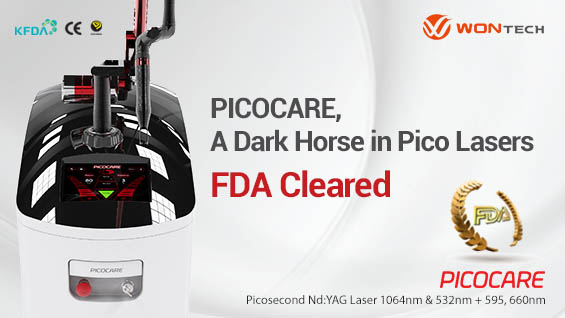The need for a certain level of energy for efficacy
It would help us to briefly go over the history of picosecond Laser. In tattoo removal, the smallest ink particle is about 40nm with the TRT(thermal relaxation time) of 1ns. The shortest pulse duration of Q-switched Lasers is 10ns. This does not satisfy the TRT of the smallest ink particles. There was a need for pulse durations shorter than 10ns and picosecond Laser was initially developed for tattoo removal. But does it also work on pigmented lesions?
Generally, the TRT of melanosome is thought to be 1ms. This is pretty long. Most Q-switched Lasers used at private practices have shorter pulse duration than the TRT of melanosomes and are sufficiently effective. Naturally, there was skepticism about whether the picosecond Laser can offer any new benefits that previous Lasers are not already offering. A study that fanned such skepticism1 looked at the effect of nanosecond, picosecond and femtosecond Lasers on melanosome by testing from the lowest to the highest energy levels. The authors argued that a certain level of wattage, not the pulse duration(power density), is important to induce any kind of change in melanosomes. The authors found that increasing the power density by a thousand times with a much shorter pulse duration does not mean that you can use lower energy output, as a certain level of energy output is needed to bring desired efficacy. This led the discussions that picosecond and nanosecond Lasers are not much different from each other. However, in clinical practice, it is clear that you can experience much more favorable results with lower energy using the picosecond Laser.
.jpg)
Image 2. This study found that a certain level of energy is needed for inducing melanosome change regardless of power density. <Comparative studies of femtosecond to microsecond Laser pulses on selective pigmented cell injury in skin>.
Difference between TRT and SRT
There is one important factor that the above study failed to address and that is SRT(stress relaxation time). For example, the central temperature of melanosome takes time to come down to 500℃ from 1000℃. This time is defined as TRT. Irradiating Laser with pulse duration shorter than this time allows the heat to effectively destroy the target. This is the basis of selective photothermolysis. SRT is another simple concept. When tissues expand from exposure to heat and generate shock waves. This is similar to the heat waves that spread hundreds of kilometers following a nuclear bomb explosion. SRT is defined as the time it takes for heat waves to exit the tissues. Sufficient energy given at a shorter pulse duration than SRT allows destruction of target tissues by shock waves with minimal impact on surrounding tissues. This is the biggest difference between picosecond Laser and nanosecond Laser. The SRT of melanosome is defined as 300ps. This is also the reason why the manufacturers of picosecond Lasers are striving toward 450ps and 300ps. Shock waves are not particular to picosecond Laser. Exposure to all Laser energy generates shock waves but whether stress confinement occurs is another matter.
[Advertisement] PICOCARE - Manufacturer: WONTECH(www.wtlaser.com)
-To be continued




















